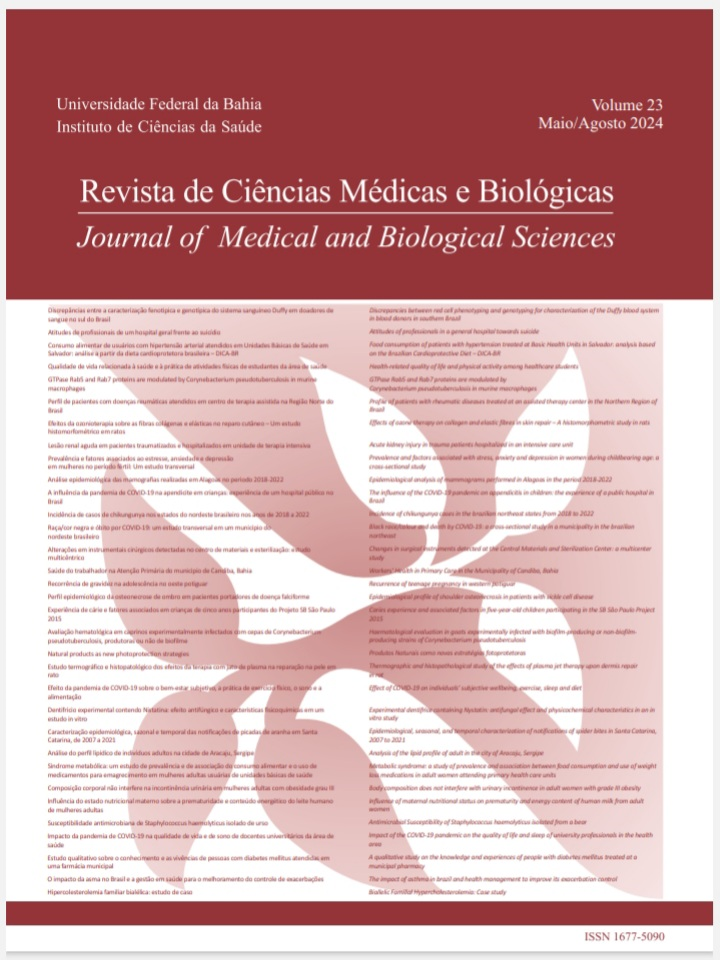Efeitos da ozonioterapia sobre as fibras colágenas e elásticas no reparo cutâneo – Um estudo histomorfométrico em ratos
DOI:
https://doi.org/10.9771/cmbio.v23i2.64117Keywords:
Ozone; ozone therapy; healing; collagen; elastic tissueAbstract
Abstract
Objective: to analyse the effects of ozone therapy in two forms of presentation – gas and ozonated oil – for biomodulation of collagen
and elastic fibres in experimentally induced skin wounds in rats. Methodology: 30 male Wistar rats were randomly distributed into
three experimental groups: CG (control group), GOG (group treated with ozone gas) and GOO (group treated with ozonated oil). All
animals underwent a surgical incision on the back, after which the GOG and GOO groups received ozone therapy directly into the wound,
starting immediately after surgery and continuing until the third day. Half of the animals were euthanised after five days, while the other
half after ten days of experiment. During the respective evaluation periods, skin sections were obtained and stained with Sirius red for
analysis of collagen fibres and Weight’s Orcein for the study of elastic fibres. These collagen and elastic fibre sections were subjected
to histomorphometric and statistical data analyses. Results: increasing compaction of collagen fibres towards the lesion’s surface was
observed in the groups treated with ozone. The elastic fibres, in turn, were sparsely distributed, especially on the fifth day, in the GOG
group. The presence of collagen in the GOG group in relation to the CG was statistically significant on the fifth day of the experiment
(p=0.016). The elastic fibres showed a statistically significant result on the 5th day in the GOG group concerning the CG (p=0.016) and
on the 10th day in the GOO about the CG (p=0.016). Conclusion: During the proliferative phase of skin repair, ozone therapy played a
biomodulatory role, as it promoted a significant increase in collagen and elastic fibres in the extracellular matrix in the different periods
of the study. This therapeutic modality emerges as a promising approach for studying healing processes in various types of tissues.
Downloads
Downloads
Published
How to Cite
Issue
Section
License
Copyright (c) 2024 Journal of Medical and Biological Sciences

This work is licensed under a Creative Commons Attribution 4.0 International License.
The Journal of Medical and Biological Sciences reserves all copyrights of published works, including translations, allowing, however, their subsequent reproduction as transcription, with proper citation of source, through the Creative Commons license. The periodical has free and free access.


